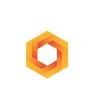
i
SAP
Filter interviews by
SAP Developer Associate Interview Questions and Answers
7 Interview questions
CDS views and RAP framework enhance data modeling and application development in SAP environments, promoting efficiency and reusability.
CDS Views: Core Data Services (CDS) views allow for defining semantic data models in SAP, enabling complex queries and data access.
RAP Framework: The RAP (Rapid Application Programming) framework facilitates the development of business applications using CDS views and OData servic...
Binary trees are hierarchical data structures composed of nodes, where each node has at most two children.
Consists of nodes with at most two children - left and right
Each node can have zero, one, or two children
Used in various applications like binary search trees, expression trees, etc.
Design a calculator that performs operations on 128 bit integers.
Use a data structure like an array to store the 128 bit integers.
Implement functions for addition, subtraction, multiplication, and division.
Consider handling overflow and underflow cases.
Use bitwise operations for efficient calculations.
To reverse a linked list, we need to traverse the list and change the direction of the pointers. To get the right view of a binary tree, we need to traverse the tree and keep track of the rightmost node at each level.
To reverse a linked list, we can use three pointers to keep track of the current, previous, and next nodes.
To get the right view of a binary tree, we can use a queue to traverse the tree level by leve...
What people are saying about SAP





I am comfortable with various subjects related to software development.
Programming languages (e.g. Java, Python, C++)
Web development (e.g. HTML, CSS, JavaScript)
Database management (e.g. SQL, MongoDB)
Software testing and debugging
Version control systems (e.g. Git)
Object-oriented programming concepts
Algorithms and data structures
Uncommon Characters Problem Statement
Given two strings str1 and str2 containing only lowercase alphabets, find the characters that are unique to each string, i.e., characters that occur in only one of the...
Find uncommon characters in two strings and return them in lexicographically sorted order.
Iterate through each character in both strings and keep track of their frequency using a hashmap.
Iterate through the hashmap and add characters with frequency 1 to the result array.
Sort the result array in lexicographical order and return it.
Reverse a Linked List Iteratively
You are given a singly linked list of integers. The task is to return the head of the reversed linked list.
Example:
Input:
The given linked list is 1 -> 2 -> 3 -...
Reverse a singly linked list iteratively and return the head of the reversed linked list.
Iterate through the linked list and reverse the pointers to point to the previous node instead of the next node.
Keep track of the previous, current, and next nodes while traversing the linked list.
Update the head of the reversed linked list to be the last node encountered.
Time complexity: O(N), Space complexity: O(1).
SAP Developer Associate Interview Experiences
16 interviews found
I applied via LinkedIn and was interviewed in Oct 2024. There were 2 interview rounds.
This round had 20 questions on Basics of ABAP
(2 Questions)
- Q1. Questions of OO Abap
- Q2. Questions on Projects
I applied via Campus Placement and was interviewed in Aug 2024. There were 2 interview rounds.
60 min 2-ques from array and dp.
(1 Question)
- Q1. 2 questions with project discussion
I appeared for an interview in Oct 2024, where I was asked the following questions.
- Q1. Have you worked with CDS views and implemented the RAP framework?
- Ans.
CDS views and RAP framework enhance data modeling and application development in SAP environments, promoting efficiency and reusability.
CDS Views: Core Data Services (CDS) views allow for defining semantic data models in SAP, enabling complex queries and data access.
RAP Framework: The RAP (Rapid Application Programming) framework facilitates the development of business applications using CDS views and OData services.
An...
- Q2. How did you manage your responsibilities in a client-facing role and address client situations?
- Ans.
I effectively managed client responsibilities by prioritizing communication, understanding needs, and delivering timely solutions.
Maintained regular communication with clients to understand their needs and expectations.
Utilized project management tools to track progress and ensure timely delivery of solutions.
Addressed client concerns promptly by organizing meetings to discuss issues and provide updates.
Example: In a p...
I applied via Company Website and was interviewed in Aug 2023. There were 4 interview rounds.

(2 Questions)
- Q1. GIL, WSGI, Django
- Q2. DSA questions - Leetcode medium
(1 Question)
- Q1. 2 Leetcode medium
(1 Question)
- Q1. Common HR questions. Why do you want to join? Negotiations etc.
Interview Preparation Tips
I applied via LinkedIn and was interviewed in Mar 2023. There were 8 interview rounds.

Travelling Salesman based coding problem was asked.
(1 Question)
- Q1. Technical questions were asked related to java.
(1 Question)
- Q1. Medium level Backend questions were asked.
(1 Question)
- Q1. Managerial Round contained scenario based questions to judge my behavior within a team.
(1 Question)
- Q1. Managerial round with someone outside the hiring team was conducted to re-assure the behavioral assessment.
(1 Question)
- Q1. HR Round consisted of personal and professional aspirations and compensation was not discussed over here.
(1 Question)
- Q1. Final HR call was done over telephone to discuss the salary terms and proceed further.
Interview Preparation Tips
(1 Question)
- Q1. What are binary trees?
- Ans.
Binary trees are hierarchical data structures composed of nodes, where each node has at most two children.
Consists of nodes with at most two children - left and right
Each node can have zero, one, or two children
Used in various applications like binary search trees, expression trees, etc.
Interview Preparation Tips
Skills evaluated in this interview
I applied via Campus Placement and was interviewed before Sep 2023. There were 4 interview rounds.
Mainly Question based on aptitute and OOPs concept
Change the array such that the element value should not be the average of its neighbours
Maximum distance between two relatives in tree
check if one string is a subsequence of first one
(1 Question)
- Q1. Logic and thinking based on the previous Interviews Office location role in last company work life in sap
Interview Preparation Tips
I applied via Naukri.com and was interviewed in Nov 2021. There were 5 interview rounds.
Open book coding test. Depends on the format. I had 2 questions to code in 45 minutes
(1 Question)
- Q1. Technical round where basic understanding of the topics like Java, Dbms, DS, MySQL was asked.
(1 Question)
- Q1. Another one-on-one round where in depth knowledge on technical skills was tested.
(1 Question)
- Q1. Managerial round was with managers. Asked real life application questions and some logical reasoning.
(1 Question)
- Q1. Basic HR discussion like working from home/ working from office/ hybrid. Explanation of role and responsibilities. Salary negotiation
Interview Preparation Tips
I applied via Campus Placement and was interviewed before Sep 2022. There were 5 interview rounds.

(2 Questions)
- Q1. Simple coding problem.
- Q2. Java Exceptions and OOP
(2 Questions)
- Q1. Machine learning questions
- Q2. Design a calculator that does operations on 128 bit integers.
- Ans.
Design a calculator that performs operations on 128 bit integers.
Use a data structure like an array to store the 128 bit integers.
Implement functions for addition, subtraction, multiplication, and division.
Consider handling overflow and underflow cases.
Use bitwise operations for efficient calculations.
(1 Question)
- Q1. Managerial questions
(1 Question)
- Q1. Name one initiative you took last year
Skills evaluated in this interview
I applied via Campus Placement and was interviewed in Sep 2021. There were 5 interview rounds.
2 codes medium level
(1 Question)
- Q1. Linked list, array questions
(1 Question)
- Q1. Graph, OOPs, project discussion.
(1 Question)
- Q1. Discussion on mtech courses and new technologies.
(4 Questions)
- Q1. Where do you see yourself in 5 years?
- Q2. Why should we hire you?
- Q3. What are your strengths and weaknesses?
- Q4. Tell me about yourself.
Interview Preparation Tips
SAP Interview FAQs
Some of the top questions asked at the SAP Developer Associate interview -
The duration of SAP Developer Associate interview process can vary, but typically it takes about less than 2 weeks to complete.
Tell us how to improve this page.
SAP Interviews By Designations
- SAP Software Developer Interview Questions
- SAP Developer Associate Interview Questions
- SAP Developer Interview Questions
- SAP Associate Software Developer Interview Questions
- SAP Senior Developer Interview Questions
- SAP Software Engineer Interview Questions
- SAP Scholar@sap Interview Questions
- SAP Devops Engineer Interview Questions
- Show more
Overall Interview Experience Rating
based on 9 interview experiences
Difficulty level
Duration
Interview Questions from Similar Companies
SAP Developer Associate Reviews and Ratings
based on 115 reviews
Rating in categories
|
Software Developer
1.3k
salaries
| ₹14.1 L/yr - ₹27 L/yr |
|
Developer Associate
1k
salaries
| ₹10.8 L/yr - ₹18.7 L/yr |
|
Developer
909
salaries
| ₹16 L/yr - ₹28 L/yr |
|
Senior Developer
574
salaries
| ₹25.2 L/yr - ₹45 L/yr |
|
Business Process Consultant
484
salaries
| ₹16.8 L/yr - ₹35 L/yr |

Oracle

SAS

Zoho

IBM
- Home >
- Interviews >
- SAP Interview Questions
















